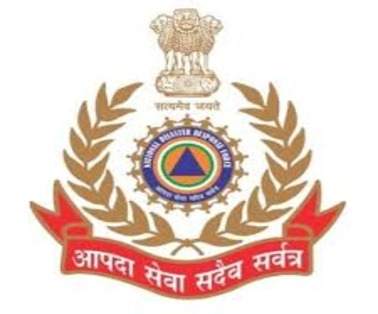The 53rd Goods and Services Tax (GST) Council recently met in Delhi under the Chairpersonship of union minister for Finance.
Key Points from the 53rd GST Council Meeting
- The 53rd GST Council meeting took place on June 22, 2024, in New Delhi.
- This was the first GST Council meeting after the 2024 Lok Sabha election results, with the 52nd GST Council meeting being held on October 7, 2023.
- This meeting reflected the Council’s commitment to addressing pressing issues within the GST framework.
- The 53rd GST Council meeting was chaired by the newly re-elected Finance Minister of India, Mrs. Nirmala Sitharaman.
- Other attendees included Union Minister of State for Finance Shri Pankaj Chaudhary, Chief Ministers of Goa and Meghalaya; Deputy Chief Ministers of Bihar, Haryana, Madhya Pradesh, and Odisha; besides Finance Ministers of States & UTs (with legislature) and senior officers of the Ministry of Finance & States/ UTs.
- It also agreed to reconvene in August 2024 to discuss restructuring the multiple tax rates under the seven-year GST.
Major Announcements at the 53rd GST Council Meeting
- Aadhaar-based Biometric Authentication: The council announced the rollout of biometric-based Aadhaar authentication on a national level to combat fraudulent input tax credit claims made through fake invoices. This is aimed at enhancing tax compliance.
- Waiver of Interest and Penalties for Non-Fraudulent Cases: The council has recommended waiving interest and penalties for demand notices issued under Section 73 of the GST Act, which applies to cases that do not involve fraud, suppression, or misstatements.
- New Monetary Limits for Filing Appeals: The GST Council has recommended new monetary thresholds for filing appeals by the department in various courts which are Rs 20 lakh for the GST Appellate Tribunal, Rs 1 crore for High Court, and Rs 2 crore for the Supreme Court for filing appeals by the department. The aim is to reduce government litigation.
- Central Support and Conditional Loans to States: The government introduced the ‘Scheme for Special Assistance to States for Capital Investment’, where some loans are conditional on states implementing citizen-centric reforms and capital projects, urging states to meet the criteria to access these loans.
- Petrol and Diesel under GST: The central government expressed its intent to bring petrol and diesel under the GST regime, pending consensus among states on the applicable tax rate. This is viewed as a step towards uniform taxation of fuel across the country.
Changes in GST Rates Announced at the Meeting
GST Rates on Goods
The Council recommended the following changes in GST rates for goods:
| Item | Previous GST Rate | Revised GST Rate | Remarks |
| Aircraft parts and components | Variable | 5% | Uniform rate for parts, components, testing equipment, tools, tool-kits |
| Milk cans (steel, iron, aluminium) | Variable | 12% | This applies to all types |
| Cartons, boxes, and cases (paper board) | 18% | 12% | |
| Solar cookers | Variable | 12% | Includes single or dual energy sources |
| Defence forces equipment | Variable | Exempt | IGST exemption extended for 5 years till June 30, 2029 |
| Aerated beverages (Defence supply) | Variable | Exempt | Supply by Unit Run Canteens under the Ministry of Defence |
| Technical documentation for AK-203 kits | Variable | Adhoc IGST | For Indian Defence forces |
GST Rates On Services
The Council recommended the following exemptions for services:
| Service Description | Previous GST Rate | Revised GST Rate | Remarks |
| Indian Railways services to the public | Variable | Exempt | Includes platform tickets, retiring rooms, waiting rooms, cloakroom services, battery-operated car services |
| Special Purpose Vehicles (SPV) services to Indian Railways | Variable | Exempt | Infrastructure use and maintenance services supplied by Indian Railways |
| Hostel Accommodation services (up to ₹20,000 per month) | Variable | Exempt | A minimum continuous period of 90 days required |
About GST and the GST Council
- GST was introduced through the 101st Constitution Amendment Act, 2016.
- It is the biggest indirect tax reform in the country.
- It was introduced on the pretext of ‘One Nation One Tax’.
- The nationwide reform subsumed 17 large taxes and 13 cesses. And after initial hiccups and tepid collection, the GST revenue has picked up pace over the last two years.
- The GST avoids the cascading effect or tax on tax which increases the tax burden on the end consumer.
Objectives And Need Of GST
- The reasons for adopting a single rate structure in most countries are to have a simple tax system, prevent misclassifications and litigations arising therefrom, and to avoid an inverted duty structure of taxes on inputs exceeding those on outputs requiring detailed scrutiny and refunds.
Features Of GST
- It is applicable on ‘supply’ of goods or services as against the present concept on the manufacture of goods or on sale of goods or on provision of services.
- It is based on the principle of destination-based consumption taxation as against the present principal of origin-based taxation.
- It is a dual GST with the Centre and the States simultaneously levying tax on a common base.
- The GST to be levied by the Centre would be called Central GST(CGST) and that to be levied by the States would be called State GST (SGST).
- An Integrated GST (IGST) would be levied an inter-state supply (including stock transfers) of goods or services.
- The GST would apply to all goods other than alcoholic liquor for human consumption and five petroleum products, viz. petroleum crude, motor spirit (petrol), high speed diesel, natural gas and aviation turbine fuel.
- The GST Council headed by the Union Finance Minister is the governing and key decision-making body for GST.
Background
- In his budget speech of 2006-07, the then Finance Minister P Chidambaram had floated the idea of moving towards the Goods and Services Tax or GST regime.
- And the next decade was spent in thrashing out its final contours and mustering the courage to usher in the reform in indirect taxation.
- Amid much fanfare, the GST was finally rolled out on the midnight of first of July 2017 by Prime Minister Narendra Modi.
Tax Structure Under GST
- Central GST to cover Excise duty, Service tax etc
- State GST to cover VAT, luxury tax
- Integrated GST (IGST) to cover inter-state trade. It is not a tax per se but a system to coordinate state and union taxes.
- It has a 4-tier tax structure for all goods and services under the slabs- 5%, 12%, 18% and 28%.
GST Council
- It is a constitutional body under Article 279A for making recommendations to the Union and State Government on issues related to Goods and Services Tax(GST).
- It is chaired by the Union Finance Minister and other members are the Union State Minister of Revenue or Finance and Ministers in-charge of Finance or Taxation of all the States.
- It is considered as a federal body where both the centre and the states get due representation.
- It is the first constitutional federal body vested with powers to take all major decisions relating to GST
Composition Of GST Council:
- Chairperson: The Union Finance Minister
- The Union Minister of State in charge of Revenue or Finance
- Ministers in-charge of Finance or Taxation of all the States
- Vice-chairperson: The members of the Council from the states have to choose one amongst themselves to be the Vice-Chairperson of the Council.
- Chairperson of the Central Board of Excise and Customs (CBEC): to be included as a permanent invitee (non-voting) to all proceedings of the Council.
Working of the GST Council
- The GST Council reaches decisions in its meetings by a majority of at least three-fourths of the weighted votes of the members present and voting.
- A quorum of 50% of the total members is required to conduct a meeting.
- The Central Government’s vote carries a weightage of one-third of the total votes cast in a meeting.
- The votes of all state governments combined have a weightage of two-thirds of the total votes cast.
- The recommendations of the GST Council were earlier considered binding, but in 2022 the Supreme Court in Union of India v. Mohit Minerals Pvt. Ltd Case ruled that they are not binding, as both Parliament and State legislatures have “simultaneous” power to legislate on GST
Conclusion
The 53rd GST Council meeting demonstrated a proactive approach to improving GST compliance, simplifying tax procedures, and moving towards uniform taxation across India. The upcoming August 2024 meeting is expected to further address tax rate rationalization to strengthen the GST framework.
To Download Monthly Current Affairs PDF Click here
Click here to get a free demo
Discover all about CLAT Exam



